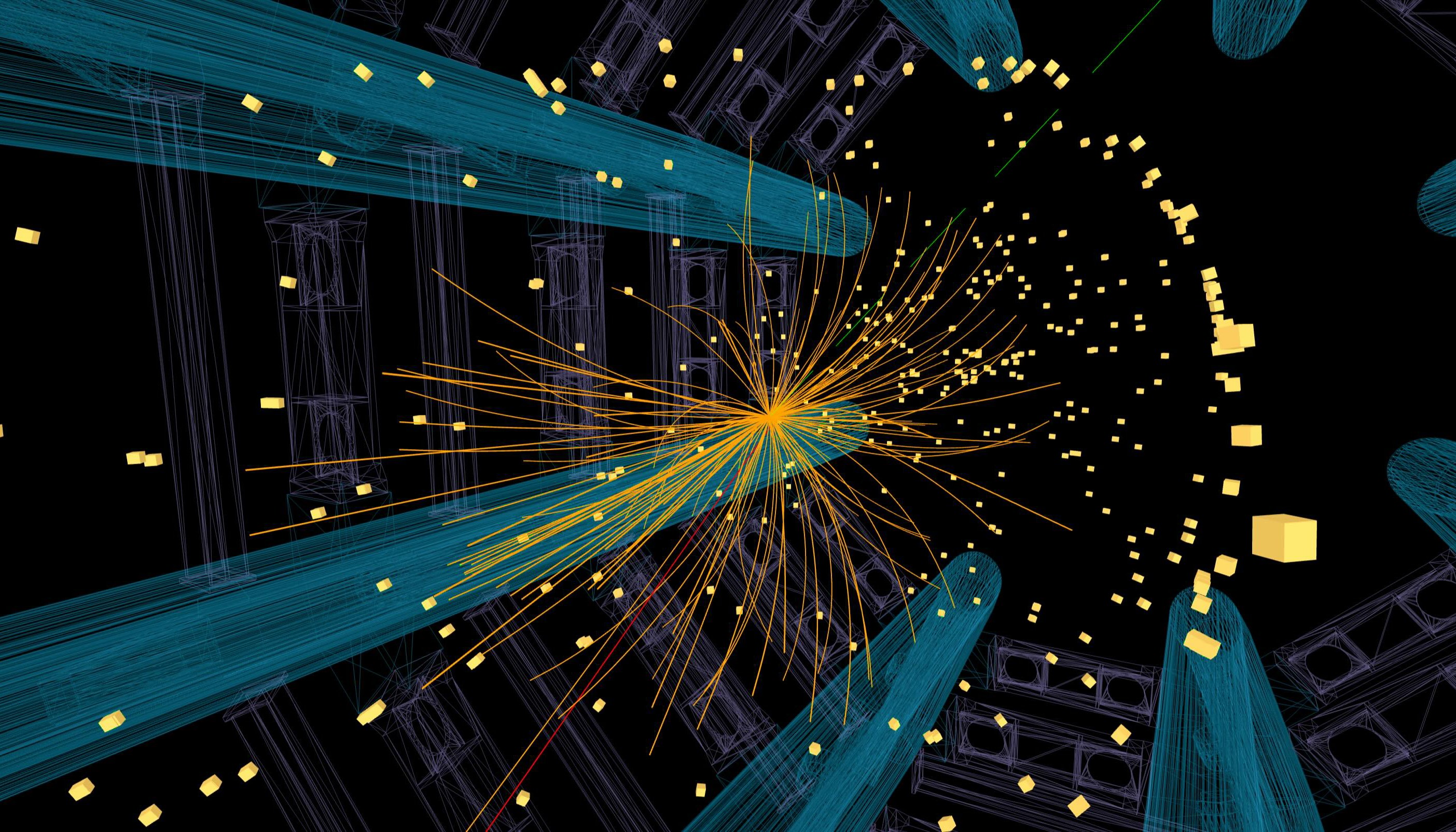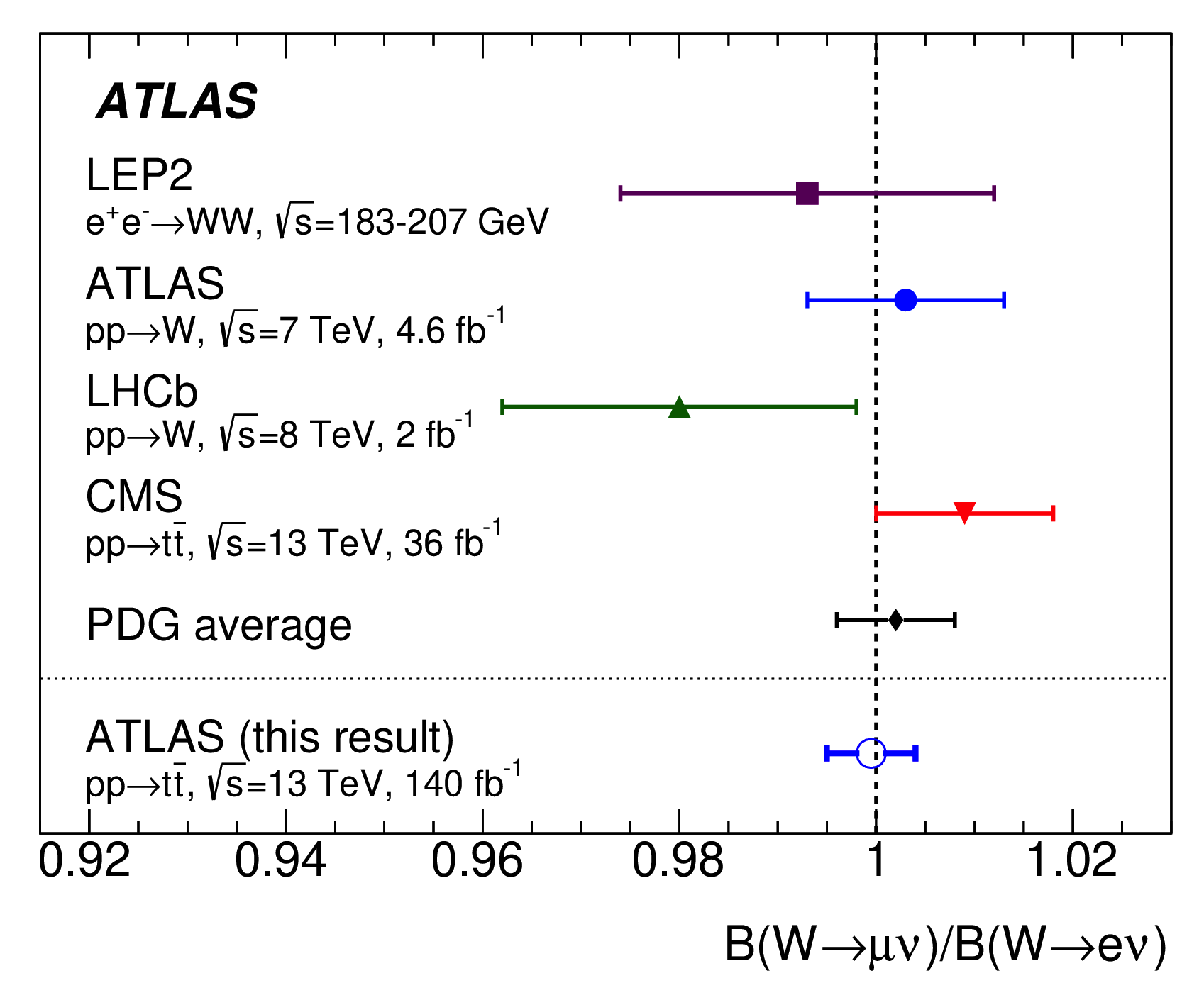First ATLAS measurement of W and Z boson production using Run-3 data
28 March 2024 | By
For over 40 years, since their discovery at CERN’s SPS collider, W± and Z bosons have been the subject of extensive research. As the carriers of the weak force, precise measurements of their properties are essential for understanding the electroweak sector of the Standard Model and possibly also finding deviations from theory predictions, which would hint for new physics beyond the Standard Model. For instance, studying W and Z boson production in different energy regimes may unveil potential contributions from new particles or interactions, which are accessible at higher energies but invisible at low energies

The ATLAS Collaboration has just released its first measurements using LHC Run-3 data of the production rates (“cross sections”) of W and Z bosons. These new measurements are the first to be carried out at the unprecedented centre-of-mass energy of 13.6 TeV. They provide a benchmark test of the Standard Model and add to ATLAS’ wealth of previous cross-section measurements performed at the centre-of-mass energies of 2.76 TeV, 5 TeV, 7 TeV, 8 TeV and 13 TeV (see Figure 1). Moreover, this new ATLAS analysis also provides a first measurement of the ratio of top-quark-pair to W-boson production cross sections.
In their study, ATLAS physicists considered the production of W-bosons decaying into one charged lepton (electron or muon) and one neutrino, as well as Z-bosons decaying into oppositely-charged lepton pairs. These channels, in addition to large cross sections, provide clean experimental signatures with suppressed backgrounds, leading to a more precise measurement. To address sources of background, researchers used a mixture of data-driven and simulation-based methods.
These new ATLAS measurements mark a significant addition to our understanding of W and Z production cross sections at a new energy regime.
Researchers measured the production cross sections within a well-defined region of the ATLAS detector (the “fiducial” cross section) to be 4250 ± 150 pb for the W+ boson, 3310 ± 120 pb for W- boson, and 744 ± 20 pb for the Z boson (with systematic effects dominating the uncertainty). The ratios of the fiducial cross sections were also measured, and have reduced relative uncertainties due to the cancellation of some of the systematic uncertainties. They were found to be 1.286 ± 0.022 between W+/W- bosons, 10.17 ± 0.25 between W±/Z bosons and 0.112 ± 0.003 between a top-quark-pair/W± boson. The measured W and Z boson fiducial cross sections are in good agreement with Standard-Model predictions (see Figure 2), whereas the top-quark pair over the W-boson fiducial cross-section ratio is slightly lower than some of the theoretical predictions.
These results mark a significant addition to our understanding of W and Z production cross sections at a new energy regime. More precise results are expected as researchers continue to explore the Run-3 dataset, and make further improvements to their understanding of systematic uncertainties.
Learn more
- Measurement of the vector boson production cross sections and their ratios using the LHC Run 3 pp collision data at 13.6 TeV (arXiv:2403.12902, see figures)
- Moriond EW 2024 presentation by Mihaela Marinescu: Measurement of the W and Z cross-section at 13.6 TeV in ATLAS
- Summary of new ATLAS results from Moriond 2024, ATLAS News, March 2024
- See also the full list of ATLAS physics results





